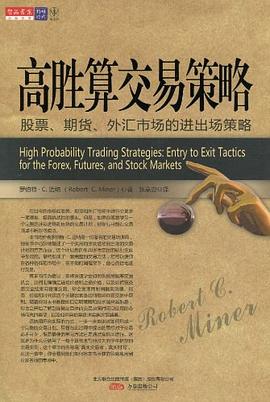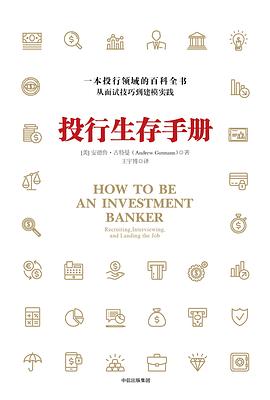学会提问(原书第12版·中英文对照学习版)
内容简介
如果你家乡的企业因为防治雾霾而限产停产,你会支持还是反对?
如果微信群里,家人时不时发来一些标题为“……秘密”“……必看”的养生文章,你会支持还是劝阻?
如果无数专家都说今年股市要跌、房价要涨,你会相信谁,质疑谁?结论是唯一的吗?
......
我们生活在嘈杂、喧嚣和不确定的世界里,每时每刻都被泛滥的信息所包围,大到世界经济发展的趋势,小到个人生活的决策,面对别人和媒体兜售的观点,如果你缺乏独立思考和判断,就只能全盘接受——他们热衷于让你相信这是“事实”,但所说的话往往真假参半。你明明觉得有什么不对劲,可一时又很难找到突破口反驳。
即使专家说得再动听,也不一定靠谱,我们有必要依靠自己的大脑,不草率、不盲从,不为感性和无事实根据的传闻所左右,《学会提问》帮助我们有意识地学习和运用批判性思维,提出批判性问题,对问题深思熟虑,尽力理解那些价值观和我们背道而驰的人的分析推理方式,克服偏见对判断的影响,这样才有可能得出更为正确、理性的结论。
当你能够坦然面对立场和你完全相左的意见,理性判断而不会党同伐异时,当你面对提问和质疑,有能力组织更多确凿的证据支持自己的观点,而不只把声高当有理,或认为别人是没事找茬,有意和自己过不去时,当你能够在对话和辩论中拨开迷雾,识别出对方的逻辑谬误和情感操纵时,世界在你眼中将变得更加有趣、开阔和坚定。
......(更多)
作者简介
尼尔·布朗(Neil Browne)
美国博林格林州立大学的杰出经济学教授。获有托雷多大学法学博士学位和得克萨斯大学的博士学位。曾与合作者合著七本书,并在专业期刊发表一百余篇研究论文。威斯康星大学、印第安纳大学、科罗拉多大学等几十所大学曾经聘请布朗教授,协助培养教职员批判性思维技巧。
他也任职于《韩国批判性思维期刊》的编辑委员会,还是“国际批判性思维大会”的主要发言人。先后荣获博林格林州立大学“杰出教学能力奖”“终生成就奖”,以及美国教育促进与支持委员会的“全国年度杰出教授”银牌奖章、“俄亥俄州年度杰出教授”等无数地方性和全国性的荣衔。
还为IBM亚太公司、乐高公司、新加坡K2B国际公司、美国商学院联盟等众多机构及公司提供批判性思维的训练及咨询服务。
斯图尔特·基利(Stuart Keeley)
美国伊利诺伊大学心理学博士。现为博林格林州立大学心理学教授。
译者简介
许蔚翰 美国天普大学管理学硕士、菲律宾德拉萨大学教育管理哲学博士,现任教于安徽工业大学。
吴礼敬 上海外国语大学英语学院英语语言文学硕士,北京外国语大学国际中国文化研究院比较文学与跨文化研究博士,合肥师范学院副教授。
......(更多)
目录
赞 誉
前 言
第1章 正确提问的益处和方法 001
我们生活在嘈杂、混乱的世界 001
专家说得再动听,也不一定靠得住 004
有必要依靠自己的大脑 006
激发你的批判性思维 006
海绵式思维和淘金式思维 008
弱势批判性思维和强势批判性思维 012
勤于练习很重要 014
批判性思维和与人交往 016
批判性思维者拥有的主要价值观 018
让对话有效进行下去 020
营造友好的交流氛围 024
像批判性思维者那样写作和发言 024
第2章 论题和结论是什么 030
论题的种类 032
寻找论题 034
寻找写作者或发言者的结论 036
找到结论的线索 038
思维体操 040
给个提示 042
第3章 理由是什么 048
开始质疑的过程 052
理由的提示词 056
让理由和结论一目了然 056
先有理由,后有结论 056
像批判性思维者那样写作和发言 060
思维体操 064
给个提示 068
第4章 哪些词语意思不明确 072
让人捉摸不透的多义词 074
找准关键词 076
检查有没有歧义 78
判定歧义 080
上下文和歧义 084
歧义、定义和字典 084
澄清歧义不只是你的责任 088
像批判性思维者那样写作和发言 088
思维体操 094
给个提示 096
第5章 价值观假设和描述性假设是什么 102
价值观冲突和价值观假设 108
从价值观到价值观假设 110
典型的价值观冲突 112
把立论者的背景作为寻找价值观假设的线索 112
把可能发生的后果作为寻找价值观假设的线索 114
寻找价值观假设的其他方法 116
了解其他人的价值倾向的价值 116
价值观与相对性 118
找出并评价描述性假设 118
描述性假设举例说明 120
常见的描述性假设 122
找到假设的线索 124
像批判性思维者那样写作和发言 126
思维体操 134
给个提示 136
第6章 论证中有没有谬误 140
用提问的方法找出论证中的谬误 144
从评价假设出发 144
发现其他常见的论证谬误 150
警惕分散注意力的干扰 160
愚弄人的循环论证 162
论证谬误小结 164
扩展关于谬误的知识 166
思维体操 166
给个提示 170
第7章 证据的效力:个人经历、典型案例、当事人证言和专家陈述 174
事实还是见解 176
我们需要可靠的证据 178
证据的来源 180
以个人经历作为证据 182
以典型案例作为证据 184
以当事人证言作为证据 184
以专家意见作为证据 188
思维体操 192
给个提示 196
第8章 证据的效力:个人观察和调查研究 198
以个人观察作为证据 198
有偏差的调查和问卷 200
以研究报告作为证据 204
研究发现中存在的一般问题 206
从研究样本进行概括 214
从测量方法进行概括 216
专家观点什么时候最可信 220
科学研究和互联网 222
像批判性思维者那样写作和发言 224
思维体操 230
给个提示 232
第9章 有没有替代原因 236
何时该寻找替代原因 238
替代原因的说服力 240
寻找替代原因 242
唯一的原因还是原因之一 242
将多种视角作为寻找替代原因的指导 244
混淆相关性和因果关系 246
混淆“在此之后”与“因此” 248
解释单个事件或行为 250
评价替代原因 252
替代原因与你的表达和交流 252
发掘潜在的原因 254
思维体操 256
给个提示 258
第10章 数据有没有欺骗性 264
不知来历和有偏差的数据 266
令人困惑的平均值 268
测量误差 272
错把一件事的结论用来证明另一件事 272
通过省略信息欺骗 274
在自己的写作中使用统计数字 278
思维体操 278
给个提示 280
第11章 有什么重要信息被省略了 284
找到省略信息的益处 286
不完整的论证在所难免 288
帮你识别省略信息的问题 290
我们需要知道确切的数字 290
负面视角的重要性 294
如果省略的信息还是找不到 296
像批判性思维者那样写作和发言 298
思维体操 304
给个提示 306
第12章 能得出哪些合理的结论 308
二分式思维:妨碍我们考虑多种可能性 310
灰度思维:两面还是多面 312
条件句的生产力 314
识别多个结论能解放思维 316
小结 316
思维体操 318
给个提示 320
第13章 干扰批判性思维的障碍 324
正确提问带给人的不快 324
思考过快 326
刻板印象 326
背叛我们的思维习惯 328
晕轮效应 328
信念固着 330
可得性启发法 332
答非所问 332
自我中心 334
一厢情愿:批判性思维最大的障碍 336
最后的话 340
译后记 344
CONTENTS
Preface xi
Chapter 1 The Benefit and Manner of Asking the Right Questions 001
The Noisy, Confused World We Live In 001
Experts Cannot Rescue Us, Despite What They Say 005
The Necessity of Relying on Our Mind 007
Critical Thinking to the Rescue 007
The Sponge and Panning for Gold: Alternative Thinking Styles 009
Weak-Sense and Strong-Sense Critical Thinking 013
The Importance of Practice 015
Critical Thinking and Other People 017
Primary Values of a Critical Thinker 019
Keeping the Conversation Going 021
Creating a Friendly Environment for Communication 025
Writing and Speaking as Critical Thinkers 025
Chapter 2 What Are the Issue and the Conclusion? 031
Kinds of Issues 033
Searching for the Issue 035
Searching for the Author’s or Speaker’s Conclusion 037
Clues to Discovery: How to Find the Conclusion 039
Practice Exercises 041
Sample Responses 043
Chapter 3 What Are the Reasons? 049
Initiating the Questioning Process 053
Words That Identify Reasons 057
Keeping the Reasons and Conclusions Straight 057
Reasons First, Then Conclusions 057
Writing and Speaking as Critical Thinkers 061
Practice Exercises 065
Sample Responses 069
Chapter 4 What Words or Phrases Are Ambiguous? 073
The Confusing Flexibility of Words 075
Locating Key Terms and Phrases 077
Checking for Ambiguity 079
Determining Ambiguity 081
Context and Ambiguity 085
Ambiguity, Definitions, and the Dictionary 085
Limits of Your Responsibility to Clarify Ambiguity 089
Writing and Speaking as Critical Thinkers 089
Practice Exercises 095
Sample Responses 097
Chapter 5 What Are the Value and Descriptive Assumptions? 103
General Guide for Identifying Assumptions 107
Value Conflicts and Assumptions 109
From Values to Value Assumptions 111
Typical Value Conflicts 113
The Communicator’s Background as a Clue to Value Assumptions 113
Consequences as Clues to Value Assumptions 115
More Hints for Finding Value Assumptions 117
The Value of Knowing the Value Priorities of Others 117
Values and Relativism 119
Identifying and Evaluating Descriptive Assumptions 119
Illustrating Descriptive Assumptions 121
Common Descriptive Assumptions 123
Clues for Locating Assumptions 125
Writing and Speaking as Critical Thinkers 127
Practice Exercises 135
Sample Responses 137
Chapter 6 Are There Any Fallacies in the Reasoning? 141
A Questioning Approach to Finding Reasoning Fallacies 145
Evaluating Assumptions as a Starting Point 145
Discovering Other Common Reasoning Fallacies 151
Looking for Diversions 161
Sleight of Hand: Begging the Question 163
Summary of Reasoning Errors 165
Expanding Your Knowledge of Fallacies 167
Practice Exercises 167
Sample Responses 171
Chapter 7 The Worth of Personal Experience, Case Examples, Testimonials, and Statements of Authority as Evidence 175
Fact or Opinion? 177
The Need for Dependable Evidence 179
Sources of Evidence 181
Personal Experience as Evidence 183
Case Examples as Evidence 185
Testimonials as Evidence 185
Appeals to Authority as Evidence 189
Practice Exercises 193
Sample Responses 197
Chapter 8 How Good Is the Evidence: Personal Observation and Research Studies? 199
Personal Observation as Evidence 199
Biased Surveys and Questionnaires 201
Research Studies as Evidence 205
General Problems with Research Findings 207
Generalizing From the Research Sample 215
Generalizing From the Research Measures 217
When You Can Most Trust Expert Opinion 221
Research and the Internet 223
Writing and Speaking as Critical Thinkers 225
Practice Exercises 231
Sample Responses 233
Chapter 9 Are There Rival Causes? 237
When to Look for Rival Causes 239
The Pervasiveness of Rival Causes 241
Detecting Rival Causes 243
The Cause or a Cause 243
Multiple Perspectives as a Guide to Rival Causes 245
Confusing Causation with Association 247
Confusing “After This” with “Because of This” 249
Explaining Individual Events or Acts 251
Evaluating Rival Causes 253
Rival Causes and Your Own Communication 253
Exploring Potential Causes 255
Practice Exercises 257
Sample Responses 259
Chapter 10 Are Any Statistics Deceptive? 265
Unknowable and Biased Statistics 267
Confusing Averages 269
Measurement Errors 273
Concluding One Thing, Proving Another 273
Deceiving by Omitting Information 275
Using Statistics in Your Writing 279
Practice Exercises 279
Sample Responses 281
Chapter 11 What Significant Information Is Omitted? 285
The Benefits of Detecting Omitted Information 287
The Certainty of Incomplete Reasoning 289
Questions That Identify Omitted Information 291
But We Need to Know the Numbers 291
The Importance of the Negative View 295
Omitted Information That Remains Missing 297
Writing and Speaking as Critical Thinkers 299
Practice Exercises 305
Sample Responses 307
Chapter 12 What Reasonable Conclusions Are Possible? 309
Dichotomous Thinking: Impediment to Considering Multiple Conclusions 311
Grey Thinking: Two Sides or Many? 313
Productivity of If-Clauses 315
The Liberating Effect of Recognizing Alternative Conclusions 317
Summary 317
Practice Exercises 319
Sample Responses 321
Chapter 13 Speed Bumps Interfering with Your Critical Thinking 325
The Discomfort of Asking the Right Questions 325
Thinking Too Quickly 327
Stereotypes 327
Mental Habits That Betray Us 329
Halo Effect 329
Belief Perseverance 331
Availability Heuristic 333
Answering the Wrong Question 333
Egocentrism 335
Wishful Thinking: Perhaps the Biggest Single Speed Bump on the Road to Critical Thinking 337
Final Words 339
......(更多)
读书文摘
如果希望以吸收信息作为培养一个有思想的人的开端,那么海绵式思维存在严重的缺陷:它不能提供一种方法来确定哪些信息和观点值得相信,哪些应该反对。如果一个读者始终依赖海绵式思维,那么他将始终相信其最后接受的信息。
......(更多)






